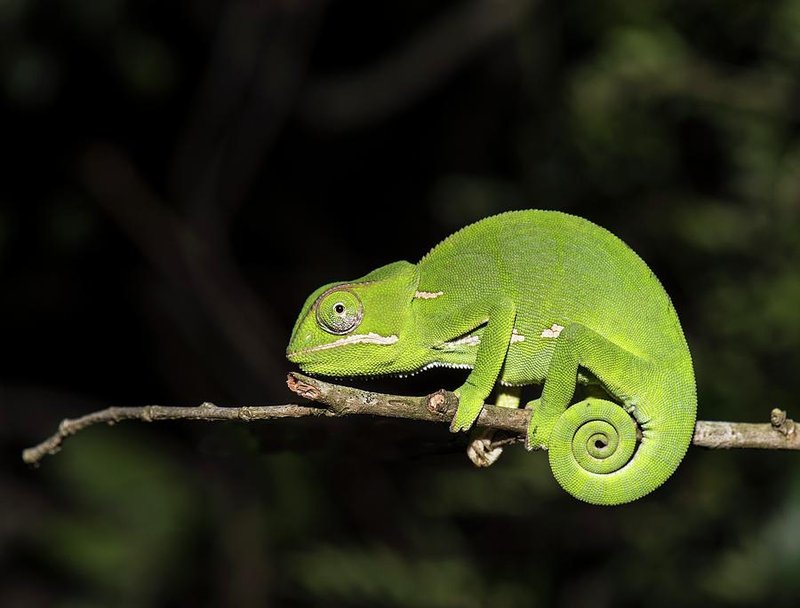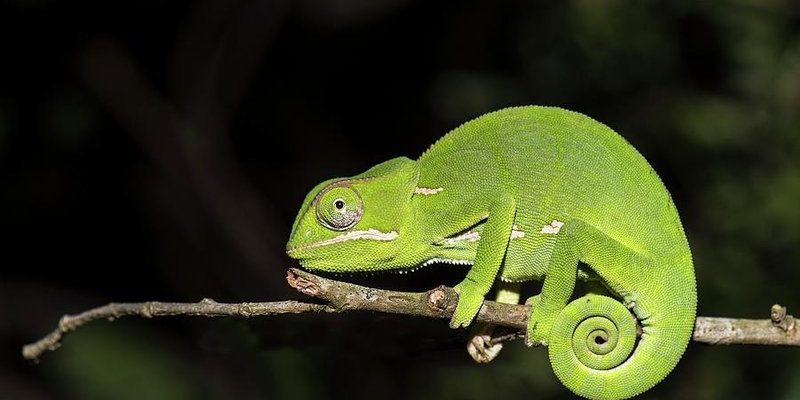
So, if you’re considering bringing home a flap-necked chameleon or you’re just curious about how to care for one, you’ve landed at the right spot. Let’s break down the essentials of temperature and humidity that these fascinating reptiles require. Understanding their needs can turn the care process into something manageable and enjoyable, and it’s not as complicated as it sounds!
Understanding Temperature Needs
When it comes to flap-necked chameleons, temperature is paramount. These creatures are ectothermic, meaning they rely on their environment to regulate their body heat. This is why their habitat needs to mimic their natural environment closely. Maintain a temperature gradient within their enclosure—this means having a warm side and a cooler side.
Ideally, the basking area should reach between 85°F and 95°F (about 29°C to 35°C). This spot allows them to soak up the heat they need to digest food and stay active. On the cooler side of the enclosure, aim for temperatures around 70°F to 80°F (21°C to 27°C). This gradient helps them choose where they feel most comfortable, just like you might seek a sunny spot on the sofa or a cooler corner on a hot day.
You might be wondering how to maintain this temperature gradient. Using heat lamps or ceramic heat emitters can help create those hot spots. If you have a larger enclosure, consider adding a UVB light; this not only provides necessary heat but also helps them synthesize vitamin D3, essential for their bone health.
The Importance of Humidity
Humidity is just as crucial for flap-necked chameleons as temperature. In their natural rainforests, these reptiles are used to high humidity levels, often between 50% and 80%. This moisture in the air helps them stay hydrated and supports their skin health. Think of humidity as the cozy blanket that keeps them feeling secure and comfortable.
To achieve this level of humidity in their habitat, regular misting is key. You can use a simple spray bottle to mist the enclosure a couple of times a day or invest in an automatic misting system for convenience. This way, your chameleon will always have access to water droplets, which they can drink directly from the leaves.
Creating a water feature, like a small drip system or a shallow bowl filled with clean water, can also enhance humidity levels while providing a drinking source for your chameleon. Just be sure to check the water daily to keep it fresh and clean. You definitely don’t want stagnant water, as that can lead to health issues!
Creating the Perfect Environment
So, now that you understand temperature and humidity, how do you put all this together for your flap-necked chameleon? First, focus on designing a suitable habitat. A tall enclosure is better than a wide one, as chameleons love climbing. Fill it with plants, branches, and vines to create vertical space that mimics their natural habitat.
Make sure you have different layers in the enclosure. Place heat lamps above the basking area and ensure some shaded spots for when your chameleon wants to cool off. Live plants, such as pothos or ficus, not only enhance humidity but also provide hiding places to keep your pet feeling secure.
It’s also essential to monitor both temperature and humidity levels regularly. Using a digital thermometer and a hygrometer will help you keep tabs. These tools are like a chameleon’s best friends, ensuring you know what’s happening in their world so you can make adjustments as needed.
Common Mistakes to Avoid
Caring for a flap-necked chameleon can come with its share of challenges, especially regarding temperature and humidity. Avoiding some common pitfalls can make a world of difference.
One major mistake is not providing enough temperature variation. A flat, uniform temperature across the habitat can lead to stress and health problems, as chameleons need that gradient to regulate their body temperature effectively.
Another issue is inconsistent humidity levels. Fluctuations can lead to dehydration or skin shedding problems. Keeping a regular misting schedule and checking your hygrometer can help maintain a steady environment. Remember, creatures from the tropics thrive in a cozy, humid atmosphere!
Lastly, be cautious with the substrate. Avoid keeping loose substrates in the bottom of the vivarium. If ingested, they can cause impaction, which can be fatal. Stick to a safe, simple setup that prioritizes your chameleon’s health.
Signs of Temperature or Humidity Stress
Recognizing when your flap-necked chameleon is uncomfortable can make a huge difference in their overall well-being. They’re good at hiding their stress, but there are some telltale signs you should be aware of. For instance, if you notice them frequently basking or staying in their cooler area, they might be signaling they need a temperature change.
In terms of humidity, look for signs of dehydration such as wrinkled skin or lethargy. If your chameleon’s skin looks dull or they seem unusually inactive, it might be time to check the humidity levels or adjust your misting routine.
Monitoring their appetite is crucial too. If your chameleon suddenly stops eating, it could be a sign that something in their environment isn’t right. Regularly check your setup and make sure that both temperature and humidity remain within their required ranges.
Taking care of a flap-necked chameleon can feel overwhelming at first, but once you break it down into manageable parts, it becomes much easier. By providing the right temperature and humidity, you’re setting the stage for a happy, healthy pet. Remember, the goal is to recreate their natural habitat as closely as possible, allowing them to thrive and show off those stunning colors.
Whether you’re a new chameleon owner or just researching for future reference, understanding these needs is a vital step. With a little patience and attention, you’ll be able to create a safe haven that your flap-necked chameleon will love. Happy chameleoning!

